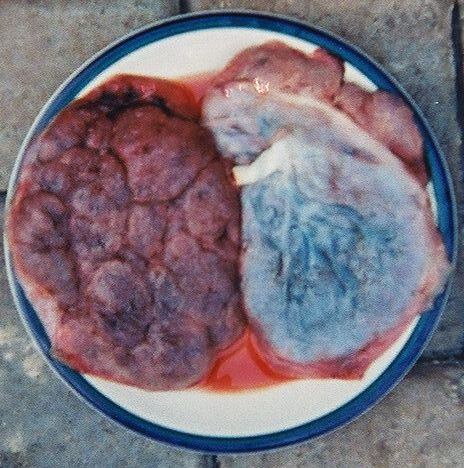Forecasting Autism: Defects in Placenta Linked to Elevated Risk

New findings reported in the April 25, 2013 online issue of Biological Psychiatry suggest that the placentas from women whose fetuses are at elevated risk for autism are markedly different from control placentas.
With one out of 50 children diagnosed with an autism spectrum disorder (ASD) in the US each year, these new findings may present an opportunity for early interventions. Currently, diagnosis of ASD is usually made when children are three to four years of age or even older rendering many therapies ineffective. The brain is most responsive to treatment in the first year of life.
Dr. Harvey J. Kliman, lead author of the study, examined whether the presence of trophoblast inclusions (TIs), distinctive, microscopic morphological abnormalities, in the placenta could serve as a predictor for children at elevated risk for autism.
Researchers obtained placentas from 117 births in the MARBLES (Markers of Autism Risk in Babies - Learning Early Signs) families who have one or more previous biological children with ASD and so their newborn is placed at elevated risk for neurodevelopmental compromise. Compared to control samples, placentas from the at-risk pregnancies had an eight-fold increased odds of having two or more TIs.
"Placentas from babies at risk for autism, clearly there's something quite different about them," said Dr. Cheryl K. Walker, an obstetrician-gynecologist and co-author of the study.
Although the research behind these findings is new, understanding that a link exists between placentas and fetal development is not. In a paper published in a 1998 issue of American Family Physician, Joseph Yetter theorized that "Numerous common and uncommon findings of the placenta, umbilical cord and membranes are associated with abnormal fetal development and perinatal morbidity." He suggested that if any abnormalities are detected or certain indications are evident, the placenta should be submitted for pathologic evaluation.
And in 2007, Dr. Kliman, himself, published research with colleagues involving 13 children with autism, finding that their placentas were three times as likely to have inclusions. He and his co-authors suggested, then, that "microscopic examination of placental tissue may provide a route to assessing risk and understanding underlying biology of autism."
The single most important factor in producing a healthy baby is a healthy placenta. As early as three days after fertilization, the trophoblasts, the major cell type of the placenta, begin to make a hormone, which insures that the endometrium will be receptive to the implanting embryo. Next, these same trophoblasts begin the process of pregnancy by attaching to and invading into the uterine lining.
The placenta, which is in fact part of the fetus, responds to the maternal environment, whether positive or negative. When the mother is malnourished, diseased, smokes or takes cocaine, the placenta will compensate by becoming stronger. There are limits, though, to the placenta's ability to handle external stresses. If multiple or severe enough, such stresses can lead to placental damage and so too fetal damage.
Understanding the importance of the placenta, of course, is not limited to contemporary medicine. One of the first and greatest medical and pharmaceutical experts of China, Li Shi-Zhen, included placenta 'zi he chi' as a medicine in his first Traditional Chinese Medicine Materia Medica published in 1578. He considered the placenta to be a 'full of life force' organ that offers to those who consume it 'jing' energy obtainable only at birth. Powerful and sacred medicine, placenta remedies are an important part of birthing history.



























